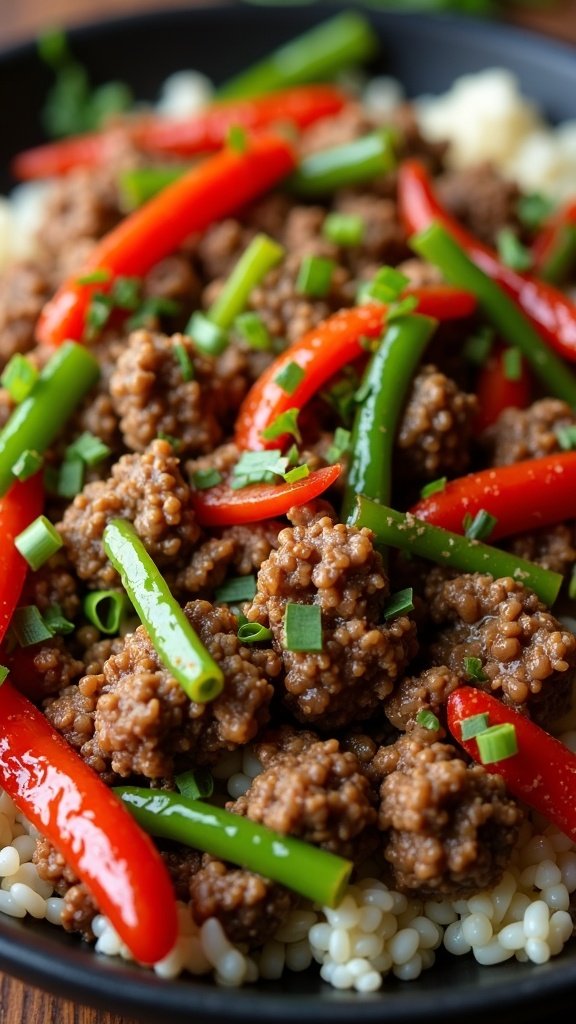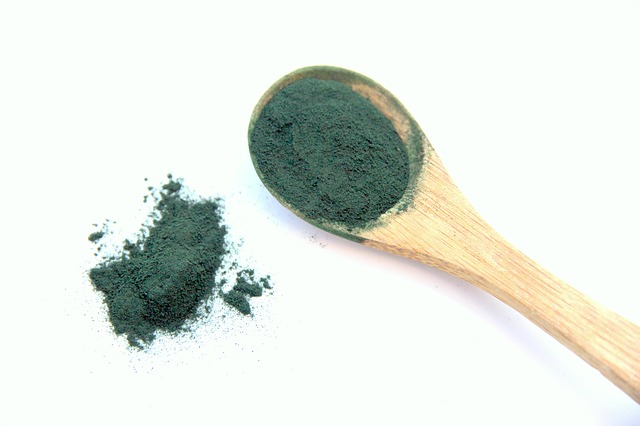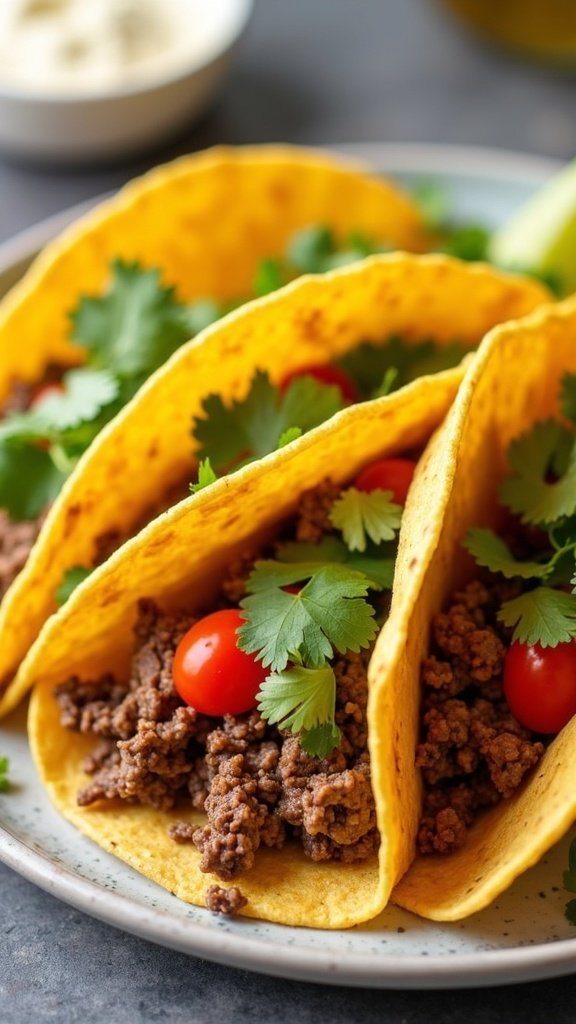Delicious & Healthy Clean Eating Snacks You Should Try
In our fast-paced world, snacking has become a common dietary habit. However, we often reach for the most convenient options, inadvertently consuming snacks laden with preservatives, artificial flavors, and unhealthy additives. This article aims to shed light on clean eating, a philosophy that encourages the consumption of whole, natural foods that are minimally processed. The path to clean eating does not necessarily mean going vegan, losing weight, or giving up your favorite foods; it’s all about choosing wholesome, enriching snacks over processed ones. Let’s decode clean eating, understand what makes a snack qualify as ‘clean’, explore a variety of these snacks, and share simple recipes for creating your own at home while providing practical tips on truly embracing this lifestyle.
Understanding Clean Eating
Understanding Clean Eating and Its Importance: A Foundation for a Healthier Lifestyle
Clean eating is a dietary approach that focuses on consuming whole foods, or foods that are minimally processed and as close to their natural state as possible. This involves eating a variety of fruits, vegetables, whole grains, lean proteins, and healthy fats while limiting the intake of processed foods, refined grains, sugars, unhealthy fats, and artificial ingredients.
The principles of clean eating contribute to the overall health and well-being of individuals. Minimally processed foods are packed with essential nutrients the body needs to function optimally. Additionally, these foods have fewer unhealthy fats, added sugars, and additives that may impact health negatively. Adhering to this approach can help maintain a healthy weight, reduce the risk of chronic diseases such as heart disease and diabetes, increase energy levels, and enhance mood and mental clarity.
Debunking Myths and Misconceptions about Clean Eating
A common myth about clean eating is that it strictly means going organic, vegan, or gluten-free. While these dietary choices can align with clean eating principles, they aren’t absolute requirements. Clean eating primarily emphasizes the consumption of real, whole foods and limits the intake of processed ones, regardless of whether they’re organic or gluten-free.

Another misconception is that clean eating is expensive. It’s true that some minimally processed foods can be pricier, but when overall expenditures on junk food, dining out, and processed snacks decrease, it becomes a cost-effective lifestyle.
Moreover, many people mistake clean eating for a restrictive diet, creating an unnecessary pressure to eat perfectly all the time. It’s essential to note that clean eating is a sustainable lifestyle approach rather than a strict diet. It’s about making more mindful choices daily, but it doesn’t mean one can’t enjoy a favorite treat occasionally.
Clean Eating Snacks
Clean eating fits harmoniously within a balanced diet, especially when it comes to snacking. Choosing clean eating snacks means opting for nutrient-dense foods over empty-calorie ones.
Whole fruits, nuts, seeds, yogurt, hummus, vegetables, whole grain crackers, roasted chickpeas, or a smoothie made with real ingredients are excellent examples. These provide not only a variety of flavors and textures but also a power-packed punch of vitamins, minerals, fiber, and lean protein, keeping you fuller for longer and providing the essential nutrients that your body needs daily.
These snacks can be easily incorporated into your regular diet. For instance, you can start by swapping out a packaged snack for a clean food option. The idea is to gradually transition towards choosing clean foods more often. In the end, the aim is to nourish the body with good-quality, wholesome foods in proper portions.
Essentially, it’s important to remember that getting too engrossed in the fine print of clean eating can potentially affect your relationship with food. The intention behind healthy eating should be one of pleasure and non-stress, endorsing elasticity and equalization in your diet, with the spotlight still firmly on nutritional value.

What Defines a Clean Eating Snack
Decoding Clean Eating Snacks: A Primer
Clean eating propagates a dietary lifestyle that promotes consumption of whole and unadulterated foods. Meanwhile, it recommends limiting or completely doing away with foods that are processed, artificial, and refined. When it comes to munching between meals, clean eating primarily suggests choosing snacks that are derived from all-natural, whole, and unpolished ingredients.
Ingredients to Look for In Clean Eating Snacks
When selecting clean eating snacks, you should prioritize items that contain whole foods like fruits, vegetables, nuts, seeds, and whole grains. For example, a handful of raw almonds or a piece of fruit would make a good clean eating snack. Similarly, whole grain crackers with a spread of natural peanut butter or hummus can also be a clean eating option. Items made from chickpeas, lentils, or other legumes can also be ideal choices as they tend to be high in fiber and protein.
It’s also beneficial to opt for snacks rich in protein and fiber. Protein helps you stay fuller for longer, and fiber supports digestive health. Foods with healthy fats, like avocados or nuts, are also promoted in clean eating as these fats are essential for total body health.
Fermented foods, which are packed with beneficial probiotics that improve gut health, can also be a part of your clean eating snack list. These can include yogurt, kefir, or pickles (without added sugars).
Ingredients to Avoid in Clean Eating Snacks
Clean eating actively discourages the consumption of processed and refined food, as well as artificial ingredients. Therefore, snacks with refined grains, such as white bread or regular pasta, should be avoided. Certain energy bars and granola bars may appear healthy but inspect the label carefully for the presence of added sugars and unhealthy preservatives.
Additional ingredients to avoid include high fructose corn syrup, trans fats, and artificial colorings or flavorings. Equally important is to avoid snacks with excessive sodium or sugar content. Many processed foods and snacks are high in sodium, which can contribute to high blood pressure and other health problems.
Reading Food Labels: Your Tool for Identifying Clean Eating Snacks
Reading food labels can be a crucial tool in identifying clean snacks. When reviewing a product label, make sure to check the serving size first to understand how much you should eat. Then, look at the list of ingredients. Ideally, a clean snack will have a short ingredient list featuring recognizable foods.
Items listed at the beginning of the ingredient list make up the largest portion of the food, so ideally, you’ll want to see whole, natural foods listed first. Look out for any hidden sugars, they might be listed as agave nectar, cane juice, corn sweetener, or dextrose among other names.
Discovering the Nutritional Aspects of Clean Eating Snacks
When identifying a “clean eating” snack, the nutritional worthiness of the ingredients is paramount. Ideally, these snacks should contain a balanced assortment of macronutrients, including proteins, carbohydrates, and healthy fats.
Moreover, you should also look for snacks that provide an array of micronutrients – the vitamins and minerals that our bodies need in trace amounts. These might include such elements as Vitamin A, iron, C, and calcium. Nutrient-loaded snacks, which deliver a high quota of vitamins and minerals for a relatively low calorie discharge, resonate perfectly with the clean eating principle.
And here’s the thing: “eating clean” doesn’t have to mean abandoning great flavor! Given the broad variety of whole foods at our disposal, it’s entirely feasible to turn out a cornucopia of tasty snacks that not only fulfill your body’s nutritional requisites but also enhance your overall wellbeing.
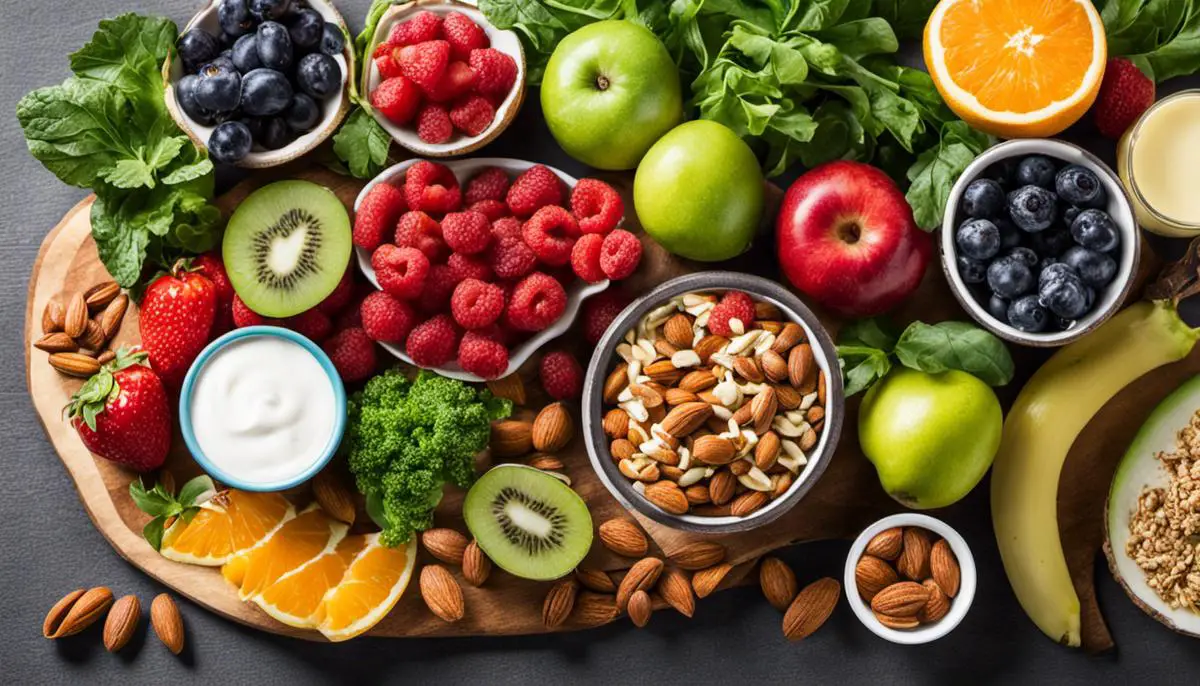
Variety of Clean Eating Snacks
The Goodness of Raw Fruits and Vegetables
A major drive of clean eating is the integration of ample fresh, unprocessed produce into your dietary plan. Given their substantial vitamin, mineral, and fiber content, raw fruits and vegetables are top-ranking snack choices for clean eaters. For those with a sweeter palate, favorites tend to be fruits such as berries, apples, bananas, and grapes. For a more savory crunch, you might enjoy carrots, bell peppers, cucumber, or cherry tomatoes.
Nuts and Seeds
Nuts and seeds serve as powerful snacks in the clean eating menu. High in healthy fats like omega-3 and omega-6 fatty acids, they are also packed with protein, fiber and various important nutrients. Examples include almonds, walnuts, flax seeds, chia seeds, and sunflower seeds. These can be consumed either raw or lightly roasted for a nutritious on-the-go snack.
Whole Grains
Whole grains are incredibly healthy and an important part of clean eating. They provide a great source of complex carbohydrates, which give sustained energy release, in addition to being high in dietary fiber. Some popular whole grain snack options are popcorn, whole grain crackers, and rice cakes.
Dried Fruits
Free from added sugar and preservatives, dried fruits are clean eating snacks that offer a sweet treat alternative. From raisins, dates, and dried apricots to more unique options like goji berries and dried mango, these offer a tasty, chewy snack that’s high in fiber and various antioxidants.
Health Bars
Opting for clean eating also includes selecting health bars made from simple, natural ingredients. Whether it’s protein bars, granola bars, or nut bars, the key is to choose options that are made from real foods, such as nuts, seeds, whole grains, and fruits. Look for bars that are low in added sugars and artificial ingredients.
Homemade Smoothies
Smoothies made from a blend of fresh fruits, vegetables, and a protein source such as yogurt or protein powder are a great clean eating snack. They allow for a great deal of customizability in terms of flavor and nutrition and can be a great way to consume a variety of fruits and vegetables in a single serving.
Energy balls/Bites
Energy balls or bites should be made with natural ingredients, such as dates for sweetness, nuts for healthy fats and protein, and oats for fiber. These little bites can be a handy and satisfying snack for clean eaters.
Clean eating is an ideal that’s not only about reducing the amount of processed or “junk” food you consume, it also encourages the addition of nutrient-rich, wholesome foods into your diet. Remember, portion control is crucial in this regard. With the right amount of planning and a little creativity, you can prepare delightful clean eating snacks that are as nutritious as they are satisfying.
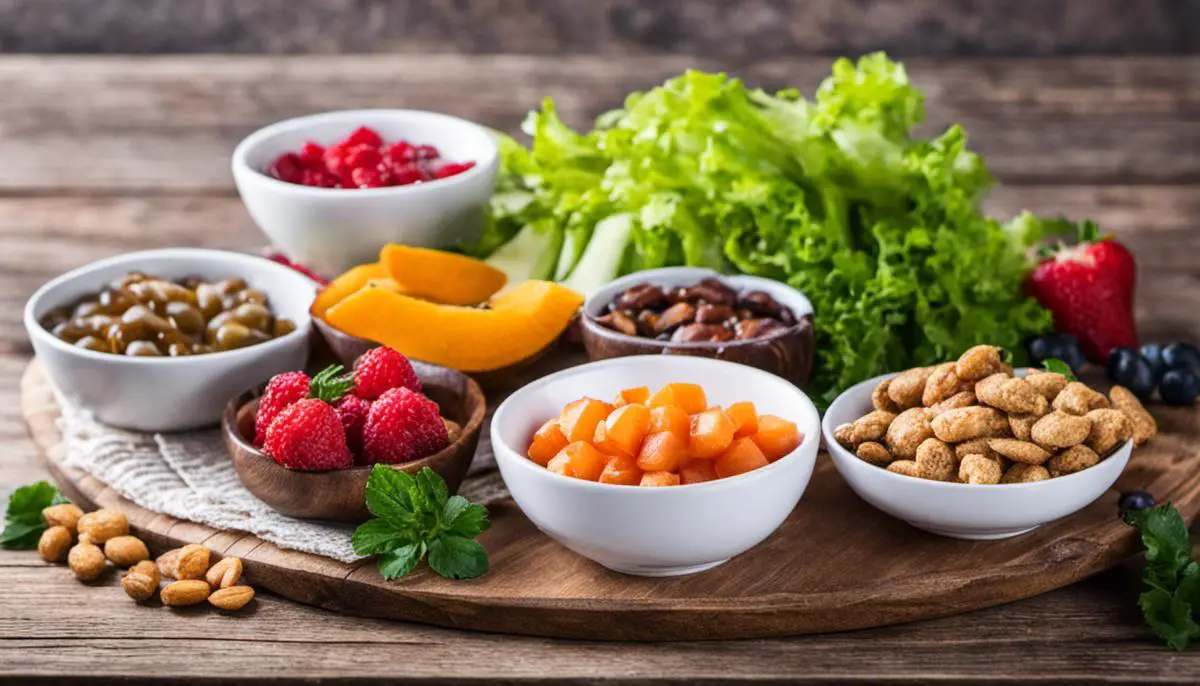
DIY Clean Eating Snacks Recipes
Making Your Own Clean Eating Snacks: A Healthy Choice
The principles guiding clean eating promotes consuming “real” foods—items that are either completely untouched or have undergone minimal processing, refined to maintain as much of their natural integrity as possible. Being prepared is critical when navigating the clean eating lifestyle, so ensure you have plenty of healthy snacks within reach to subdue those less-than-healthy, processed cravings.
Recipe 1: Energy-Boosting Trail Mix
One of the most easily customizable clean eating snacks you can make is a trail mix. This high-energy snack typically consists of nuts, seeds, dried fruit and dark chocolate.
Ingredients:
- 1 cup of raw nuts (almonds, walnuts, cashews)
- 1/2 cup of seeds (sunflower, pumpkin)
- 1/2 cup dried fruit (raisins, cranberries)
- 1/4 cup dark chocolate chips
Instructions:
- Combine all the ingredients together in a bowl.
- Mix well.
- Store it in an airtight container.
Nuts and seeds provide essential fats and proteins for your body, while the dried fruit adds natural sweetness and fiber. Dark chocolate is rich in antioxidants making this snack not only delicious, but nutritionally beneficial.
Recipe 2: Veggie Chips
If you’re a fan of crispy snacks, homemade veggie chips are a fantastic clean eating alternative to commercial chips. Kale, sweet potatoes, or zucchini can be easily turned into nutritious chips.
Ingredients:
- 1 sweet potato or zucchini, thinly sliced
- 1 tbsp olive oil
- Sea salt
Instructions:
- Preheat your oven to 200°F.
- Toss the sliced veggies in olive oil and sprinkle with salt.
- Arrange them in a single layer on a baking sheet.
- Bake for 2-3 hours until crisp, turning every 30 minutes.
Veggie chips are a low calorie, nutrient dense snack. They are filled with fiber to promote digestive health and keep you feeling full.
Recipe 3: Healthy Greek Yogurt Parfait
For a protein-packed clean eating snack, try a Greek yogurt parfait. This can be garnished with your choice of toppings like fruits, nuts, and a drizzle of honey for extra flavour.
Ingredients:
- 1 cup Greek yogurt
- 1/2 cup mixed berries
- 1/4 cup granola
- drizzle of honey
Instructions:
- Layer Greek yogurt, berries, and granola in a cup or jar.
- Repeat the layers until all ingredients are used.
- Drizzle with honey and enjoy.
Greek yogurt is high in protein and can help enhance weight loss and regulate digestion. The fruits will provide essential vitamins and minerals, while the granola and honey add healthy whole grains and sweetness.
In the journey to clean eating, it is necessary to enjoy a diet that encompasses a variety of fruits, vegetables, lean proteins, and whole grains. The beauty of preparing your snacks at home is the control it gives you – control over both the quality and the amounts of ingredients you use. These straightforward, homemade recipes will ensure you are treating your body to clean, nutrient-rich foods while satisfying your taste buds.
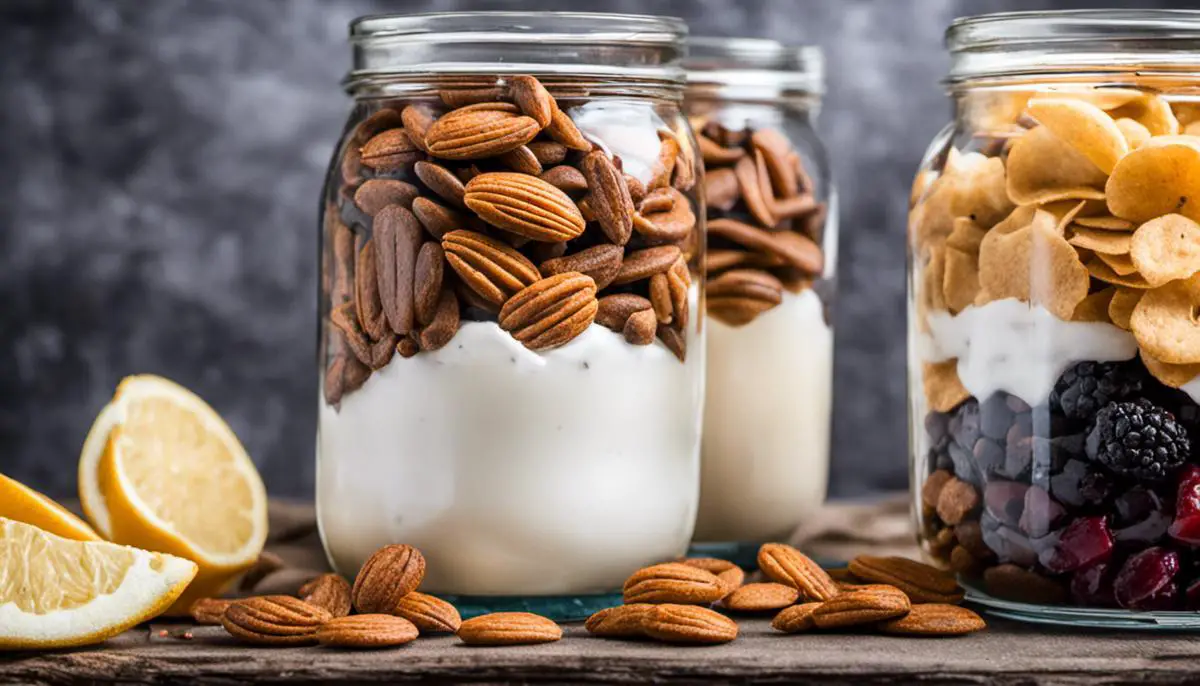
Practical Tips For Clean Eating
The Art of Shopping for Clean Eating Snacks
When you step out to shop for clean eating snacks, remember, the golden rule is to go for food items as close to their natural state as possible. The less processed, the better. Take fresh fruits and vegetables, for example, they are pure, unprocessed forms of sustenance which come loaded with much-needed nutrients. Other smart picks include nuts, seeds, and whole grains, as they pack beneficial fats and fiber.
Now, let’s talk about sugar, specifically, added sugar. Be wary of clever marketing spins like “healthy” and “organic.” While they sound good, a quick glance at the nutritional facts might reveal they are packed with added sugars. This is often true for many dried fruit, yogurt, and granola bars. Instead, aim for cleaner options like unsweetened dried fruit or plain Greek yogurt.
Reading Food Labels for Clean Eating
Understanding food labels is key to clean eating. Check for the amount of saturated and trans fats, as high levels can increase your risk of heart disease. Sodium is also hidden in many processed foods, with high levels leading to increased blood pressure. Sugar, too, is another common additive to watch out for, as previously mentioned.
In addition, scrutinize the ingredient list. If the list is long and full of unpronounceable words, it’s likely highly processed. Aim for products with a short list of recognizable, whole food ingredients.
Meal Planning & Prepping for Clean Eating
Meal planning and prepping can drastically reduce the temptation to reach for unhealthy, processed snacks. Prepare a variety of clean eating snacks ahead of time and store them in easy-to-reach places.
Popular clean eating snacks include hummus with cucumber slices, apple slices with almond butter, boiled eggs, or a small serving of mixed nuts. Fresh fruits and vegetables, which can be pre-cut and stored in the fridge, also make excellent clean snacks.
When choosing grain-based snacks, make sure you’re selecting whole grain options. For instance, instead of regular bread or rice cakes, choose whole grain bread or brown rice cakes.
Eating Out & Clean Eating
Despite the challenges, it is possible to make clean eating choices even while eating out. Many restaurants and food chains now have healthier, more natural options on their menu.
Check the menu ahead of time online to make a clean eating plan. Consider dishes that are plant-heavy and avoid anything that is fried, creamy, or heavy in sauces. Instead, look for steamed, grilled, or baked options.
Finally, don’t forget to watch portion sizes. Even if the dish seems relatively clean, eating too much can negate its healthy qualities. Don’t hesitate to ask for a to-go box and enjoy the rest of your meal later.
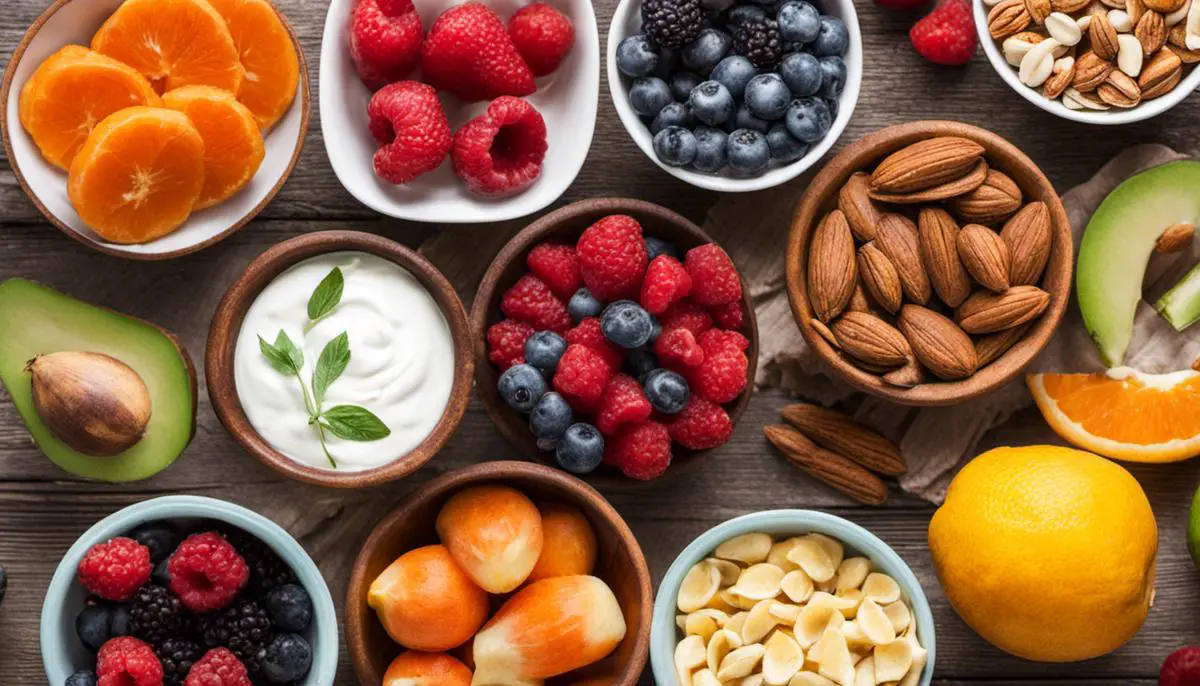
Equipped with the right knowledge and guidelines, adopting a clean eating lifestyle is quite achievable. It involves conscious choices regarding the foods we consume, with an emphasis on snacks, which can either be a source of beneficial nutrients or harmful additives. Opting for clean eating snacks sets the tone for healthy eating patterns and, ultimately, a healthier lifestyle. However, remember that balance is key. Clean eating should not feel restrictive, rather, it should be exciting with a variety of fruits, vegetables, nuts, and whole grains. With feasible DIY recipes, practical shopping, and meal prepping tips, this journey becomes even more straightforward. Here’s to a healthier, cleaner, and more nourishing snacking culture!

